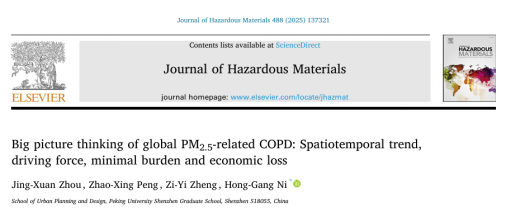
DOI: 10.1016/j.jhazmat.2025.137321
Journal of Hazardous Materials, a top-tier SCI Q1 journal in environmental science with an impact factor of 12.2, focuses on research related to the environmental impacts of hazardous materials.
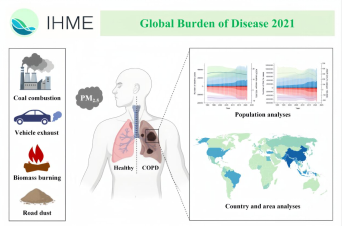
Recently, Jingxuan Zhou, a 2023 master’s student from the School of Urban Planning and Design at Peking University, published a research article titled “Big picture thinking of global PM2.5-related COPD: Spatiotemporal trend, driving force, minimal burden and economic loss” in Journal of Hazardous Materials. The study evaluates the global burden of chronic obstructive pulmonary disease (COPD) attributable to PM2.5 exposure from 1990 to 2021, revealing improvement potential in national disease burdens and highlighting global health inequities.
Research Highlights
Persistent Increase in Global Burden: COPD deaths and disability-adjusted life years (DALYs) linked to PM2.5 exposure rose steadily from 1990 to 2021.
Vulnerable Subgroups: Elderly males in regions with severe air pollution are the most susceptible.
Key Drivers: Population aging and growth are primary factors driving the increase in PM2.5-related COPD burden.
Projected Escalation: Without intervention, the disease burden is projected to rise further, with estimated global economic losses reaching approximately $1.246 trillion by 2050.
Key Findings
PM2.5 and COPD Association:
Mendelian randomization (MR) analysis confirmed a significant positive association between PM2.5 exposure and COPD risk (OR = 2.34, 95% CI [1.07–5.51], p = 0.03). Consistency across MR methods (IVW, MR-Egger, weighted median) and sensitivity analyses (Cochran’s Q test, leave-one-out) supported robustness (Figure 1).

Figure 1
Global PM2.5-Related COPD Burden in 2021:
Deaths: 841,466 (95% UI: 610,675–1,036,867), with age-standardized mortality rate (ASMR) of 10.23 per 100,000.
DALYs: 17,683,776 (95% UI: 12,693,342–21,774,923), with age-standardized DALY rate (ASDR) of 208.27 per 100,000.
Subgroup disparities: Males exhibited 1.47 times higher deaths and 1.96 times higher ASMR than females. Burden peaked in older age groups (Figure 2).
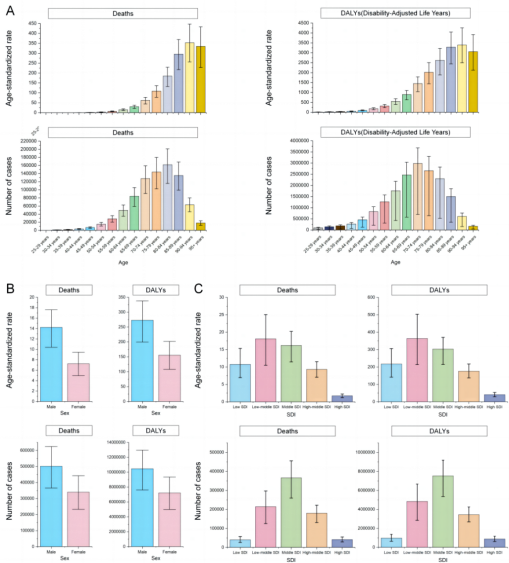
Figure 2
Spatiotemporal Patterns:
Asia, particularly China (388,184 deaths) and India (275,830 deaths), bore the highest burden. High-density burden areas included East Asia, South Asia, and parts of the Americas (Figure 3).
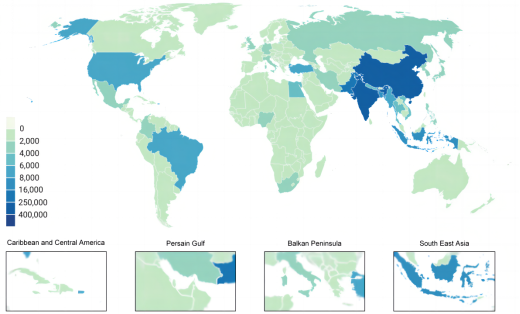
Figure 3
Decomposition and Frontier Analysis:
Aging (51.4% contribution) and population growth (55.5%) drove mortality increases, offset partially by epidemiological changes (-6.9%).
Middle Socio-Demographic Index (SDI) regions showed the greatest potential for burden reduction, while low- and high-SDI regions exhibited smaller effective gaps (Figure 4).
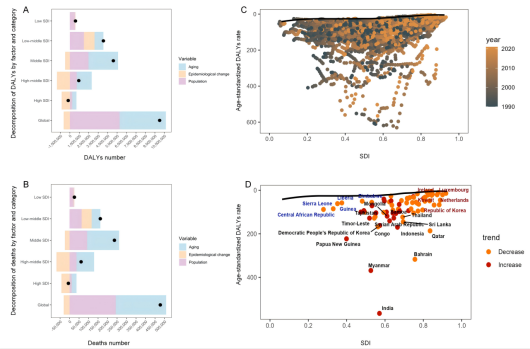
Figure 4
Health Inequity Trends (1990–2021):
Relative inequality (concentration index) increased, while absolute differences (slope index) decreased. Low-SDI regions faced growing relative disparities despite reduced absolute gaps, underscoring the need for targeted interventions (Figure 5).
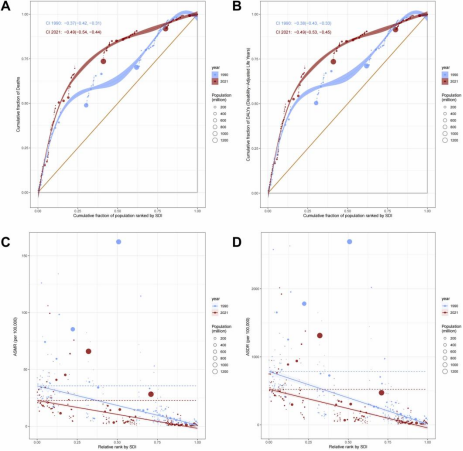
Figure 5
Projections to 2050:
ARIMA and LSTM models predicted continued rises in deaths, DALYs, and ASR. Global economic losses due to PM2.5-related COPD are estimated to reach $1.246 trillion by 2050, with China, India, and the U.S. facing the largest absolute losses (Figure 6).
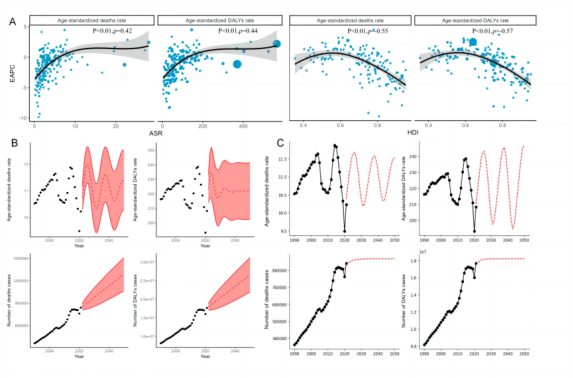
Figure 6
Environmental and Policy Implications
The study underscores the urgent need for integrated air quality management and public health strategies, particularly in rapidly industrializing middle-SDI regions. Global cooperation is critical to mitigate projected health and economic impacts.
Publication Details
Authors: Jingxuan Zhou (first author, Master’s student, School of Urban Planning and Design, Peking University).
Journal: Journal of Hazardous Materials.
Text: Jingxuan Zhou
Editor: Urban Planning Promotion Center